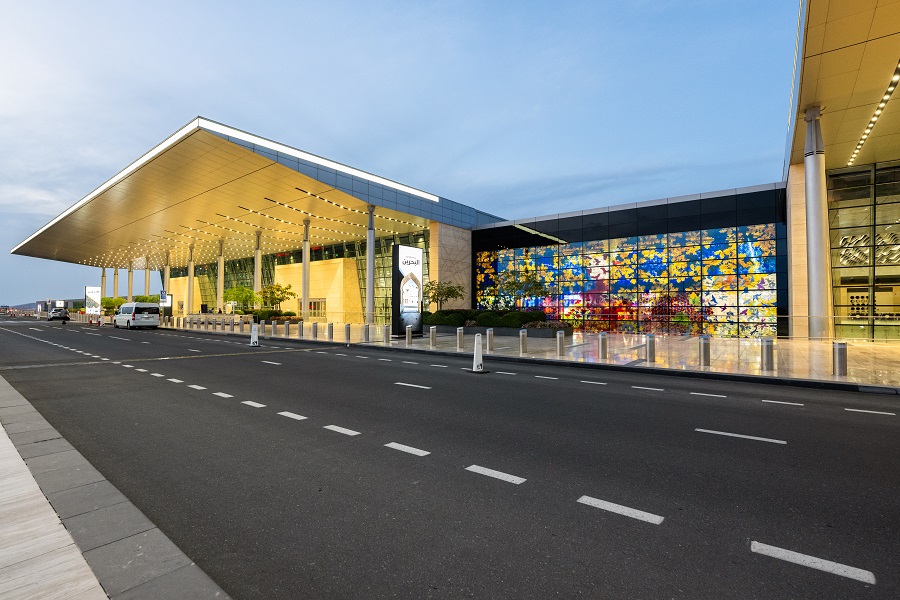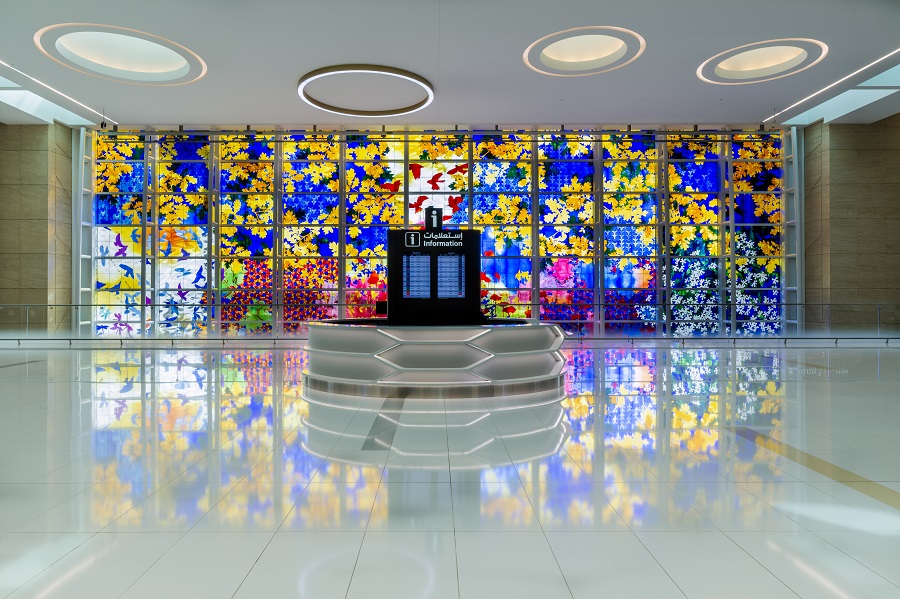CORDOBA, SPAIN: The strong bond that the Spanish city of Cordoba enjoys with Arab and Muslim culture is epitomized by a museum that showcases an art form popular during the 10th-century Arab Caliphate.
Just a few minutes away from the Mosque-Cathedral of the Andalusian city, the Museum of the Omeyan Guadameci travels back in time to an artistic technique used to adorn palaces and craft luxurious gifts.
Jose Carlos Villarejo Garcia, the last remaining artist specializing in Guadameci Islamic art, founded the museum in 2006. Coming from a family of artists who passed on their craftsmanship over generations, Villarejo has helped to build appreciation of beauty in all its forms, but above all, the geometrical.

Jose Carlos Villarejo Garcia, the last remaining artist specializing in Guadameci Islamic art. (Supplied)
“The Islamic art of Guadameci is one of the pillars of our culture,” Aristides Bermejo Hernandez, director of Parque Joyero de Cordoba and a regular visitor to the museum, told Arab News.
“Jose Carlos has rescued something almost lost and forgotten. This museum offers an incalculable historical and artistic value of things. It hurts to realize that they could so easily have become extinct.”
Journalist Jesus Cabrera, another regular visitor, is equally enthralled. “Visiting this museum is the only opportunity that the city of Cordoba offers to dive into the past and recover an ancient technique,” he told Arab News.
(Jose Carlos Villarejo Garcia, the last remaining artist specializing in Guadameci Islamic art, speaks to Arab News)
Jose Carlos received the Hernan Ruiz Award 2020 for restoring the Guadameci technique of painted, embossed leatherwork to Cordoba’s culture. The pieces of art, called “guadameci,” consist of a piece of sheepskin tanned and later gilded, polychrome and iron garnished.
“This is the same method of work used during the Caliphate of Cordoba, the most important and splendorous period of our Islamic culture,” Jose Carlos told Arab News.
“The phases of the work are exactly the same used in the 10th century in Madinat Al-Zahra in Omeyan Cordoba, but differ totally from the later Guadameci variations in Spain and the rest of the world. I use sheep or ram skins which are prepared in a very specific way and covered with a coating of silver leaf.”

Jose Carlos received the Hernan Ruiz Award 2020 for restoring the Guadameci technique of painted, embossed leatherwork to Cordoba’s culture. (Supplied)
He said the silver coating hides the skin beneath and augments one of the characteristics of the Islamic Guadameci, namely its luxurious appearance. “Once the silver base has been applied with the desired design, I proceed with the different phases of painting,” Jose Carlos said. “The paint blends with the gold and silver and brings out the full beauty of the Guadameci.”
He adds that the paintings and designs are true to his artistic preferences and always inspired by Islamic styles and range of colors. “I mix my own paints and this makes them unique,” he said. “The final step is to hammer an iron rod that has the design form at its tip. The design is thus pressed onto the gold or silver base.”
Jose Ramirez del Rio, a Spanish scholar specializing in Arabic language and culture, said that in the Middle Ages, Cordoba was the center of Arabic and Islamic art. From a historical perspective, he considers Jose Carlos’ recovery of the Guadameci important. “I hope the incredible pieces he has produced will be valued in the Arabic world as much as they are today in Spain and the Western world,” del Rio told Arab News.
FASTFACTS
CORDOBA
* Cordoba is the largest city in Spain’s Cordoba province.
* Became capital of Umayyad dynasty’s Abdal Rahman I in 756.
* Umayyad rule saw the construction of palaces and mosques.
* By 1000 Cordoba was Europe’s most cultured city.
* Narrow streets and the Great Mosque reflect Moorish heritage.
Jose Carlos says he works with designs of all types and sizes and uses tools his ancestors made by hand, adding that “they were all from Cordoba and great lovers of Islamic art and culture … art professors, art restorers, painters and artisans.”
Each work can take a year to craft because of its particular characteristics and complexity. “Each piece of art expresses something different: Admiration for the sole creator, Allah, a vision of Paradise and the beauty of the Eternal Garden,” Jose Carlos said. “Each piece is carefully designed within certain parameters and has intricate detail that leads to almost perfection in its elaboration.”

The pieces of art, called “guadameci,” consist of a piece of sheepskin tanned and later gilded, polychrome and iron garnished. (Supplied)
Jose Carlos’ love for Guadameci art started when he was a child. “I was fortunate enough to grow up among Guadameci art and paintings. I was taught at a very young age about beauty, fantasy and rigorous discipline,” he told Arab News.
He remembers watching his master and uncle Ramon Garcia Romero create elaborate guadameci designs in his studio at home. “I would visit him every day and learn his method. In time, he gave me jobs of greater responsibility,” said Jose Carlos.
“As I became older and acquired more skills, I was able to work without his supervision. It all started as a childhood game of trying to catch the gold and silver particles floating in the air before settling on the workshop floor.”

The legacy of leatherwork has enriched the world beyond Cordoba. “It is renowned throughout Europe and my family have had the honor to be chosen to elaborate a number of works for the Spanish royal family as well as other European royals,” Jose Carlos said.
“The beauty displayed in my works of art is greatly admired and appreciated by the people of an exquisite sensitivity. My work has been bought for private collections of great economic value throughout the Western world.”
However, he said the Arab world is the closest to his work and appreciates the historical significance and bond the Guadameci technique represents. “I am very honored to have produced artwork for members of Saudi royal family and members of cultural society in the Arab world,” he said.

Jose Carlos feels more comfortable and artistically appreciated in the Middle East. “I have exhibited my work in France and Morocco and shortly I will be taking my collection to Dubai,” he said. “It is in the Middle East where I propose to continue promoting both my Guadameci art and its historical heritage.”
His last exhibition was held in 2019 at the Festival of Islamic Art of Sharjah at the Sharjah Art Museum.
Jose Carlos stressed the importance of passing on knowledge to future generations to ensure that the artistic and cultural aspects of any civilization thrive. “I will most certainly be passing on my knowledge and skills as part of our historical heritage,” he said. “This is the fundamental reason why my master and I founded this museum.”
The Museum of the Omeyan Guadameci is in contact with institutions around the world interested in sharing knowledge of the Arab era. “My own children, once they have graduated from their studies, will nurture this treasure house of history,” said Jose Carlos.
---------------------






















